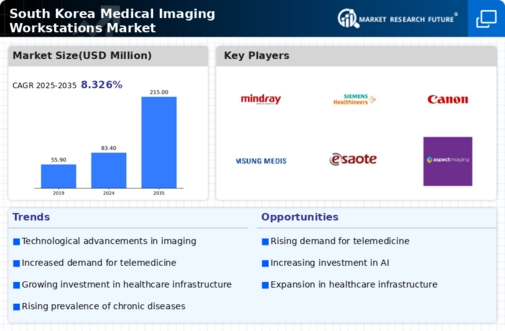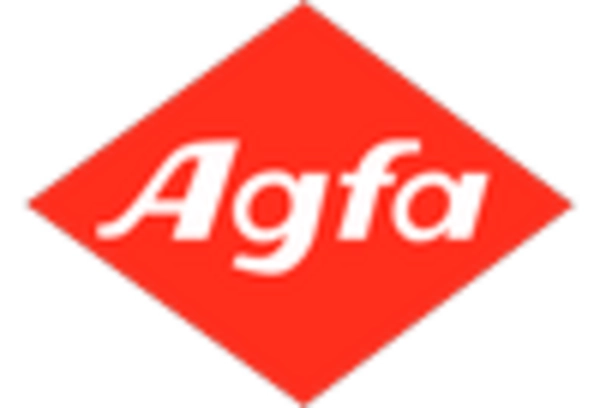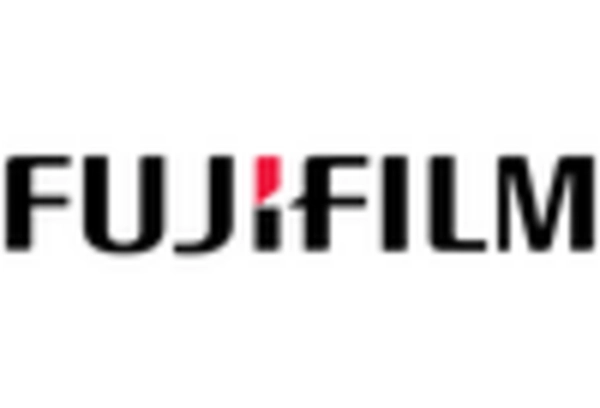Government Initiatives and Funding
Government initiatives aimed at improving healthcare infrastructure significantly impact the medical imaging-workstations market in South Korea. The government has allocated substantial funding to enhance diagnostic capabilities across healthcare facilities, particularly in rural areas. This funding is directed towards acquiring advanced imaging technologies and workstations, thereby increasing accessibility to quality healthcare services. Recent reports suggest that government investments in healthcare technology could reach upwards of $500 million by 2026. Such initiatives not only foster the growth of the medical imaging-workstations market but also ensure that healthcare providers are equipped with the necessary tools to deliver effective patient care.
Advancements in Imaging Technologies
Continuous advancements in imaging technologies are a pivotal driver of the medical imaging-workstations market in South Korea. Innovations such as 3D imaging, digital radiography, and enhanced MRI capabilities are reshaping the landscape of diagnostic imaging. These technologies not only improve image quality but also reduce radiation exposure, aligning with the increasing emphasis on patient safety. As healthcare providers strive to stay competitive, the adoption of cutting-edge imaging workstations becomes essential. Market analysis suggests that the introduction of new imaging modalities could lead to a market growth rate of around 7% annually. Thus, the ongoing technological advancements are likely to play a crucial role in shaping the future of the medical imaging-workstations market.
Rising Demand for Diagnostic Imaging
The medical imaging workstations market in South Korea is experiencing a notable increase in demand for diagnostic imaging services. This surge is primarily driven by the growing prevalence of chronic diseases and an aging population, which necessitates advanced imaging solutions for accurate diagnosis and treatment planning. According to recent data, the demand for imaging services is projected to grow at a CAGR of approximately 8% over the next five years. As healthcare providers seek to enhance patient outcomes, the adoption of sophisticated imaging technologies becomes imperative. Consequently, this trend is likely to propel the medical imaging-workstations market, as hospitals and clinics invest in state-of-the-art workstations to support their diagnostic capabilities.
Growing Focus on Preventive Healthcare
The medical imaging workstations market in South Korea is shifting towards preventive healthcare, driven by increased awareness of health issues among the population. As individuals prioritize regular health check-ups and screenings, the demand for imaging services rises correspondingly. This trend encourages healthcare providers to invest in advanced imaging workstations that facilitate early detection of diseases. Data indicates that preventive healthcare measures can reduce overall healthcare costs by approximately 20%, making it a financially viable approach for both patients and providers. Consequently, this growing focus on preventive healthcare is likely to stimulate the medical imaging-workstations market as facilities seek to enhance their diagnostic capabilities.
Integration of Artificial Intelligence
The integration of artificial intelligence (AI) into medical imaging systems is transforming the medical imaging-workstations market in South Korea. AI technologies enhance image analysis, improve diagnostic accuracy, and streamline workflow processes. As healthcare facilities increasingly adopt AI-driven solutions, the demand for advanced workstations that can support these technologies is expected to rise. Reports indicate that AI applications in medical imaging could potentially reduce diagnostic errors by up to 30%, thereby improving patient care. This technological evolution not only boosts the efficiency of radiologists but also drives the need for upgraded workstations, positioning AI as a key driver in the medical imaging-workstations market.

















Leave a Comment